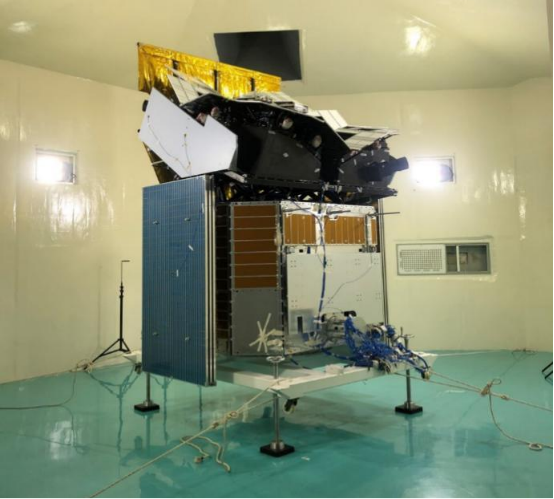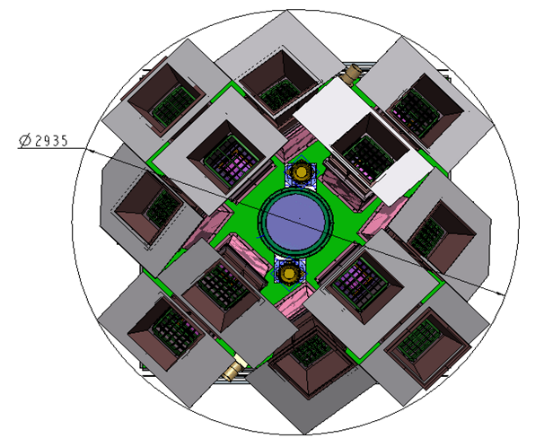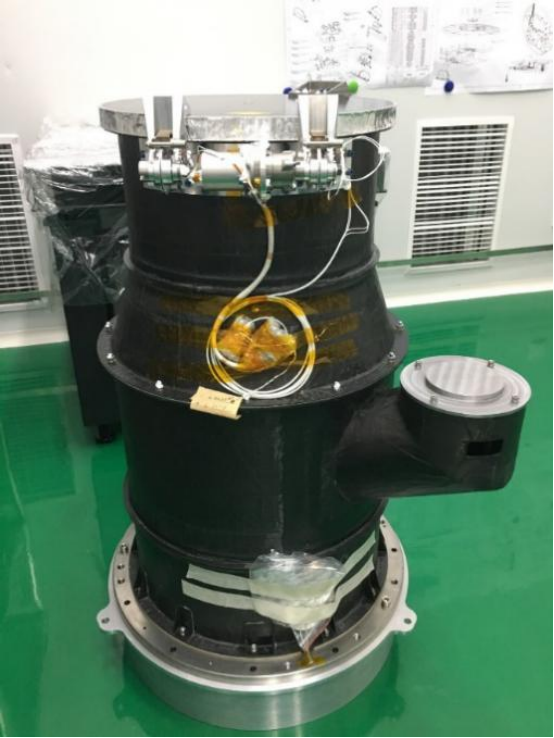Einstein Probe(EP)
The Einstein Probe (EP) is a scientific satellite among the Strategic Priority Program on Space Science(Ⅱ) supported by CAS. It was approved by the CAS on 29th Dec, 2017 and scheduled to be launched by the end of 2023 at the Xichang Satellite Launch Center, with lifetime not less than 3 years.
The Einstein Probe (EP) aims to study time-domain high-energy astrophysics, with the primary objective to carry out wide-field-view sky survey in the soft X-ray band, discover high-energy transients and monitor variable objects.

The EP satellite will provide a powerful tool to discover the merger of black holes with other objects, to servey the black holes to find out their distribution, formation and evolution in the Universe, to capture the electromagnetic counterparts of gravitational waves, provide unique new evidence for studying the early Universe, supernovae, and the activities of compact objects. EP will produce larges mounts of observational data such as X-ray all-sky dynamic images and X-ray spectral timing data for various X-ray sources, which will provide valuable data accumulation for the development of time-domain astronomy. It is also the first time that quiescent (inactive) black holes are treated as the main observational targets of an X-ray satellite, which gives the EP the capability to greatly promote the research field in the event of black holes swallowing stars.
To take all-sky survey in X-ray band, the EP carries a set of widefield-of-view X-ray imagers and two Wolter-I type X-ray telescopes with high sensitivity to discover rare X-ray transients and to detect unknown type X-ray transient objects. The mission is expected to make important scientific discoveries in time-domain astronomy and its multiple intersections with astrophysics and cosmology.
EP is an astronomic science mission aimed to discover new objects, new phenomena and inherent mechanisms in the dynamic universe. With its outstanding capability of large-scale survey and follow-up observing with high sensitivity in the X-ray band, the EP project focuses on the following scientific objectives:
(1) To discover and characterize a number of cosmic X-ray transients, some of which are faint, distant in the universal.
(2) To discover and characterize X-ray outbursts of quiescent black holes, obtain the distribution of black holes in the universal, understand the origin, evolution and accretion of black holes.
(3) To localize gravitation-wave events by capturing X-ray signals from the GW sources, which will significantly trigger the follow-up multi-messenger system to carry out multi-wavelength observing of the GW events.
(1)Discovery and study of quiescent black holes
EP is able to detect explosive events in the soft X-ray band, through which we can discover and identify quiescent black holes in the universe. Anticipated important results:
(2)All-sky survey of transients and explosive objects
With high sensitivity in X-ray observing, the EP is able to detect more distant, fainter and rarer transients. It will provide historical chances to discover new types of transients previously unknown, send alerts for transients that leads to joint observations for transients by astronomic instruments allover the world. Anticipated important results:
(3)Detecting the electro-magnetic counterparts of gravitational-wave events.
EP will cooperate with the second-generation gravitational-wave detectors (A-LIGO, A-VIRGO) in the world to carry out searches for the electro-magnetic counterparts of gravitational-wave events. If an electro-magnetic counterpart is detected, the statistical confidence in the detection of gravitational-wave source will be improved, and the position of the gravitational-wave event can be located (with an accuracy from 20 arcsec to 2 arcmin, or higher). X-ray spectrum and variability data can be obtained by EP at the same time. These results will guide international large-scale multi-wavelength instruments to carry out follow-up observations of electro-magnetic counterparts and verify the corresponding objects.
1.The platform and its specification

The Structure Model of EP
EP mission will develop a astronomic satellite which has wide field-of-view and high sensitivity to carry out all-sky survey in soft X-ray band for discovery of transient sources and variable sources. The EP satellite equips advanced Lobster-eye-type MPO X-ray imagers with much better capability to GRASP X-ray transients in the universe than all the other instruments flight before.。
The EP is able to downlink alarm information quickly after detecting transients and guide the other astronomic instruments for the follow up observations. And also has the ability of receiving upload alarming information from the ground station and guide EP to carry out follow-up observation for transients.
2.Scientific Instruments
The scientific instruments of EP satellite is composed of Wide-field X-ray Telescope (WXT, for X-ray all-sky monitoring) and Follow-up X-ray Telescope (FXT, for transient sources and variable sources observations)
(1) Wide field-of-view X-ray Telescope (WXT)

WXT
(2) Follow-up X-ray Telescope (FXT)

FXT
field of view: diameter≥38′;
Detection energy range: 0.5~8.0 keV (the X-ray effective area in the detection energy range is greater than 10cm2)
Energy resolution: ≤170 eV@ 1.25 keV;
Effective area(arallel x-rays direction), ≥100 cm2@1.25 keV,on axis;
spatial resolution: ≤2′(FWHM);
Object localization: Better than 20 arcsec
Data Access:https://ep.nssdc.ac.cn/